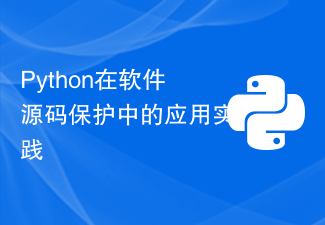jdk1.7.0_79
上文里解析了有关ArrayList中的几个常用方法的源码——《有关ArrayList常用方法的源码解析》,本文将对LinkedList的常用方法做简要解析。
LinkedList是基于链表实现的,也就是说它具备了链表的优点和缺点,随机访问慢、插入删除速度快。既然是链表,那么它就存在节点数据结构,也不存在容量大小的问题,来一个在尾部添加一个。
//LinkedList$Nodeprivate static class Node<E> {
E item;
Node<E> next;
Node<E> prev;
Node(Node<E> prev, E element, Node<E> next) {this.item = element;this.next = next;this.prev = prev;
}
}第一个默认不带参数的构造方法,构造一个空链表。
//1.LinkedList,默认构造方法public LinkedList() {
}第二个构造方法能把一个集合作为一个参数传递,同时集合中的元素需要是LinkedList的子类。
//2.LinkedList,能将一个集合作为参数的构造方法public LinkedList(Collection<? extends E> c) {this();
addAll(c);
}两个构造方法都比较简单,接下来看元素的插入及删除等方法。
public boolean add(E e) {
linkLast(e); //将元素添加到链表尾部return true;
}//LinkedList#linkLastvoid linkLast(E e) {final Node<E> l = last; //链表尾指针引用暂存final Node<E> newNode = new Node<>(l, e, null); //构造新节点last = newNode; //将链表的尾指针指向新节点if (l == null) //此时为第一次插入元素first = newNode;elsel.next = newNode;
size++; //链表数据总数+1modCount++; //modCount变量在《有关ArrayList常用方法的源码解析》提到过,增删都会+1,防止一个线程在用迭代器遍历的时候,另一个线程在对其进行修改。}学过《数据结构》的同学相信看到链表的操作不会感到陌生,接着来看看删除指定位置的元素remove(int)方法。
//LinkedList#removepublic E remove(int index) {
checkElementIndex(index); //检查是否越界 index >= 0 && index <= sizereturn unlink(node(index)); //调用node方法查找并返回指定索引位置的Node节点}
//LinkedList#node,根据索引位置返回Node节点Node<E> node(int index) {if (index < (size >> 1)) { //size >> 1 = size / 2,如果索引位于链表前半部分,则移动fisrt头指针进行查找Node<E> x = first;for (int i = 0; i < index; i++)
x = x.next;return x;
} else { //如果索引位于链表后半部分,则移动last尾指针进行查找Node<E> x = last;for (int i = size - 1; i > index; i--)
x = x.prev;return x;
}
}查找到index位置的Node后,调用unlink方法摘掉该节点。
//LinkedList#unlink,一看即懂E unlink(Node<E> x) {// assert x != null;final E element = x.item;final Node<E> next = x.next;final Node<E> prev = x.prev;if (prev == null) {
first = next;
} else {
prev.next = next;
x.prev = null;
}if (next == null) {
last = prev;
} else {
next.prev = prev;
x.next = null;
}
x.item = null;
size--;
modCount++;return element;
}从代码中就能看出LinkedList和ArrayList两者的优缺点,由于只涉及简单的链表数据结构,所以不再对其他方法进行解析。
以上是分享ArrayList中的几个常用方法的源码的详细内容。更多信息请关注PHP中文网其他相关文章!
 Python在软件源码保护中的应用实践Jun 29, 2023 am 11:20 AM
Python在软件源码保护中的应用实践Jun 29, 2023 am 11:20 AMPython语言作为一种高级编程语言,具有简单易学、易读易写等特点,在软件开发领域中得到了广泛的应用。然而,由于Python的开源特性,源代码很容易被他人轻易获取,这就给软件源码保护带来了一些挑战。因此,在实际应用中,我们常常需要采取一些方法来保护Python源代码,确保其安全性。在软件源码保护中,有多种针对Python的应用实践可供选择。下面将介绍几种常见
 使用LinkedList类的removeLast()方法删除链表中的最后一个元素Jul 24, 2023 pm 05:13 PM
使用LinkedList类的removeLast()方法删除链表中的最后一个元素Jul 24, 2023 pm 05:13 PM使用LinkedList类的removeLast()方法删除链表中的最后一个元素LinkedList是Java集合框架中常见的一种数据结构,它以双向链表的形式存储元素。通过LinkedList类提供的方法,我们可以方便地对链表进行操作,例如添加、删除和修改元素。在某些场景下,我们可能需要删除链表中的最后一个元素。LinkedList类提供了removeLas
 idea如何查看tomcat的源码Jan 25, 2024 pm 02:01 PM
idea如何查看tomcat的源码Jan 25, 2024 pm 02:01 PMidea查看tomcat源码的步骤:1、下载Tomcat源代码;2、在IDEA中导入Tomcat源代码;3、查看Tomcat源代码;4、理解Tomcat的工作原理;5、注意事项;6、持续学习和更新;7、使用工具和插件;8、参与社区和贡献。详细介绍:1、下载Tomcat源代码,可以从Apache Tomcat的官方网站上下载源代码包,通常这些源代码包是以ZIP或TAR格式等等。
 PHP代码在浏览器中如何显示源码而不被解释执行?Mar 11, 2024 am 10:54 AM
PHP代码在浏览器中如何显示源码而不被解释执行?Mar 11, 2024 am 10:54 AMPHP代码在浏览器中如何显示源码而不被解释执行?PHP是一种服务器端脚本语言,通常用于开发动态网页。当PHP文件在服务器上被请求时,服务器会解释执行其中的PHP代码,并将最终的HTML内容发送到浏览器以供显示。然而,有时我们希望在浏览器中直接展示PHP文件的源代码,而不是被执行。本文将介绍如何在浏览器中显示PHP代码的源码,而不被解释执行。在PHP中,可以使
 网站在线看源码Jan 10, 2024 pm 03:31 PM
网站在线看源码Jan 10, 2024 pm 03:31 PM可以使用浏览器的开发者工具来查看网站的源代码,在Google Chrome浏览器中:1、打开 Chrome 浏览器,访问要查看源代码的网站;2、右键单击网页上的任何位置,然后选择“检查”或按下快捷键 Ctrl + Shift + I打开开发者工具;3、在开发者工具的顶部菜单栏中,选择“Elements”选项卡;4、看到网站的 HTML 和 CSS 代码即可。
 vue能显示源码吗Jan 05, 2023 pm 03:17 PM
vue能显示源码吗Jan 05, 2023 pm 03:17 PMvue能显示源码,vue查看看源码的方法是:1、通过“git clone https://github.com/vuejs/vue.git”获取vue;2、通过“npm i”安装依赖;3、通过“npm i -g rollup”安装rollup;4、修改dev脚本;5、调试源码即可。
 PHP源码错误:解决index报错问题Mar 10, 2024 am 11:12 AM
PHP源码错误:解决index报错问题Mar 10, 2024 am 11:12 AMPHP源码错误:解决index报错问题,需要具体代码示例随着互联网的快速发展,开发人员在编写网站和应用程序时经常会遇到各种各样的问题。其中,PHP作为一种流行的服务器端脚本语言,其源码错误是开发者们经常遇到的一个问题之一。有时候,当我们尝试打开一个网站的index页面时,会出现各种不同的错误信息,例如"InternalServerError"、"Unde
 golang框架源码学习与应用全面指南Jun 01, 2024 pm 10:31 PM
golang框架源码学习与应用全面指南Jun 01, 2024 pm 10:31 PM通过理解Golang框架源码,开发者可以掌握语言精髓和扩展框架功能。首先,获取源码并熟悉其目录结构。其次,阅读代码、跟踪执行流和理解依赖关系。实战案例展示了如何应用这些知识:创建自定义中间件并扩展路由系统。最佳实践包括分步学习、避免盲目复制粘贴、利用工具和参考在线资源。


热AI工具

Undresser.AI Undress
人工智能驱动的应用程序,用于创建逼真的裸体照片

AI Clothes Remover
用于从照片中去除衣服的在线人工智能工具。

Undress AI Tool
免费脱衣服图片

Clothoff.io
AI脱衣机

AI Hentai Generator
免费生成ai无尽的。

热门文章

热工具

MinGW - 适用于 Windows 的极简 GNU
这个项目正在迁移到osdn.net/projects/mingw的过程中,你可以继续在那里关注我们。MinGW:GNU编译器集合(GCC)的本地Windows移植版本,可自由分发的导入库和用于构建本地Windows应用程序的头文件;包括对MSVC运行时的扩展,以支持C99功能。MinGW的所有软件都可以在64位Windows平台上运行。

DVWA
Damn Vulnerable Web App (DVWA) 是一个PHP/MySQL的Web应用程序,非常容易受到攻击。它的主要目标是成为安全专业人员在合法环境中测试自己的技能和工具的辅助工具,帮助Web开发人员更好地理解保护Web应用程序的过程,并帮助教师/学生在课堂环境中教授/学习Web应用程序安全。DVWA的目标是通过简单直接的界面练习一些最常见的Web漏洞,难度各不相同。请注意,该软件中

Atom编辑器mac版下载
最流行的的开源编辑器

VSCode Windows 64位 下载
微软推出的免费、功能强大的一款IDE编辑器

Dreamweaver CS6
视觉化网页开发工具





